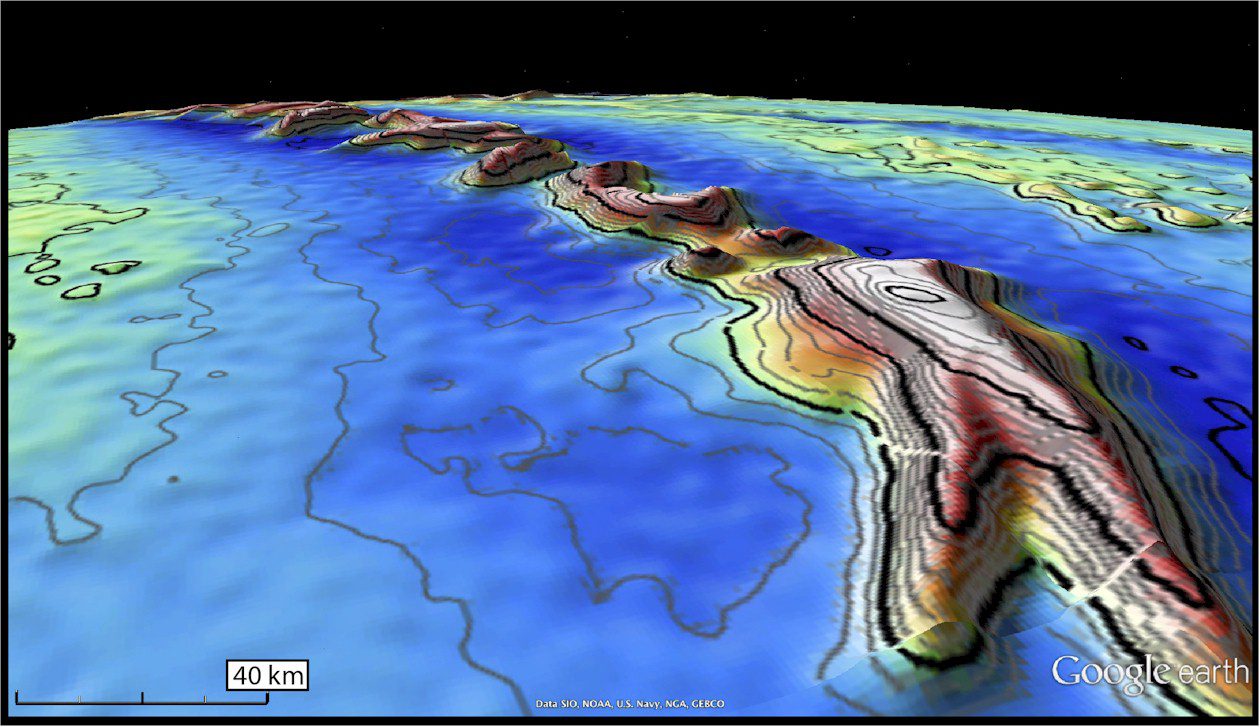Perhaps the most important of these advantages is the incorporation of color imagery into the final products which can be used to identify benthic features and characteristics including substrate type and a diversity of marine species burns et al 2016.
Satellite color imagery sea floor.
Examples include locations of upwelling characterized by cold waters that rise up from the depths often near the coasts.
The green light penetrates into the water body and captures the seafloor whereas the red light is not able to penetrate the water body and therefore bounces back from the water surface.
Satellite overlay offers a top down view of inland and coastal areas.
And warm water currents such as the gulf stream.
Shades of orange and red represent areas where seafloor gravity is stronger in milligals than the global average a phenomenon that mostly coincides with the location of underwater ridges seamounts and the edges of earth s tectonic plates.
The scripps sea floor map has also been used to discover a new microplate in the indian ocean.
The google earth data right is clearly higher resolution than that version of the scripps map left.
Magel et al 2019.
Satellite images of sea surface temperature also show patterns of water circulation.




























